Why the Diocesan shepherd lost his halo
Features
The image of the shepherd as the primary symbol of our Diocese was established when our first Bishop was consecrated in 1859. What many don’t know is that in the mid-1950s, the motif changed from a ‘Good Shepherd’, an image of Christ with a halo, to a simple shepherd representing pastoral care. Why this occurred was considered somewhat a mystery, until now
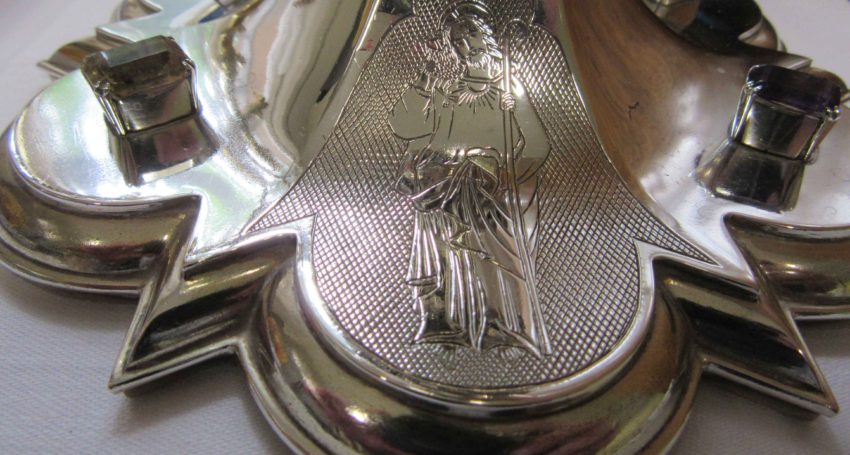
For many years I have been aware that the Arms of our Diocese, used in items like seals and logos and even carved into the rear wall of the Cathedral nave, consisted of a shepherd carrying a crook and holding a lamb under his right arm. So ubiquitous was this image that I assumed it had been an unchanging part of our Diocesan story from the beginning. To my surprise, I found that it had changed, and quite radically, both physically and symbolically, from what it once was to what it is today.
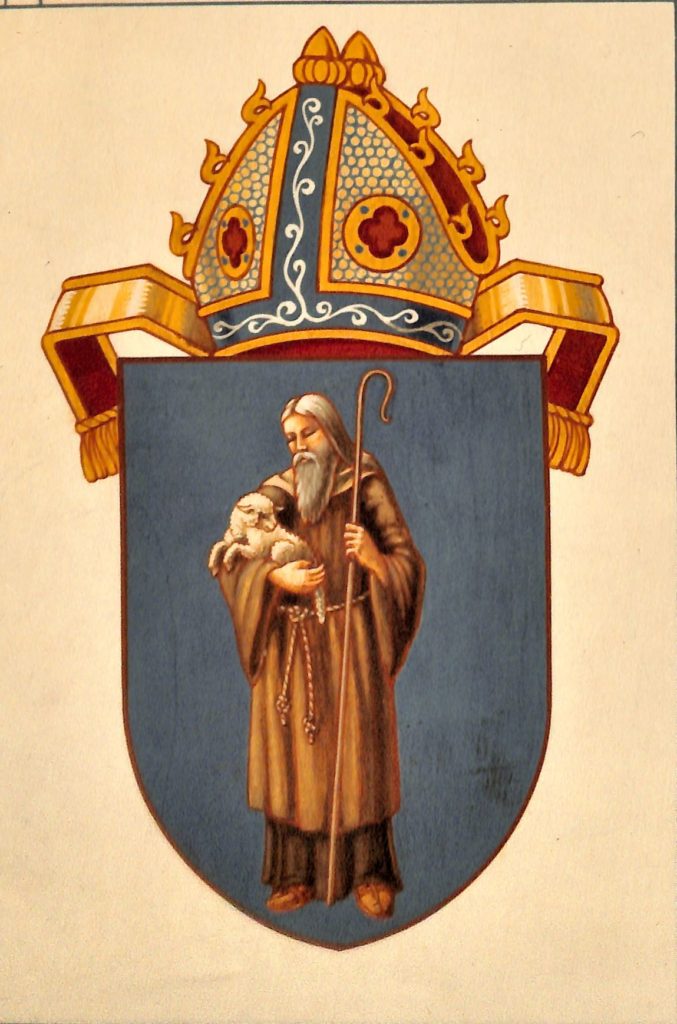
The current Diocesan Arms, issued by letters patent in 1955 (Image courtesy of the Records and Archives Centre, Anglican Church Southern Queensland)

The current Diocesan Arms carved in the rear wall of the nave of the Cathedral in 1996 (Image courtesy of the Records and Archives Centre, Anglican Church Southern Queensland)
On 14 July 1859, Bishop Edward Wyndham Tufnell (1814-1896), Brisbane’s first Bishop, was consecrated at Westminster Abbey, London. It took some time for him to prepare all that was needed before travelling to the fledgling Diocese of Brisbane, only arriving in September of 1860 with his ‘band’ of six clergy in tow.
It was during this period of preparation that Tufnell seems to have decided to embrace as his personal emblem the figure of the Good Shepherd. He had silverware embossed with this figure, resplendent with a halo, a bishop’s/shepherd’s crook, and holding a lamb, including two chalices and an alms dish with the words, “I am the Good Shepherd – the Good Shepherd giveth his life for the sheep.” These items are still held within our Diocese to this day.
Advertisement
Tufnell’s own episcopal seal, an original of which is held in the Records and Archives Centre collection, clearly has on its left side this Good Shepherd image, sitting under a mitre. Tufnell seems to have been determined to preserve this image within the new Diocese. Indeed, it wasn’t long before it was adopted as the Diocesan Arms.
On 7 October 1871, it was reported in The Brisbane Courier that an impression of the new Diocesan seal had been released. It contained within it, “…the arms of the See (the Good Shepherd), surmounted by a Bishop’s Mitre…”
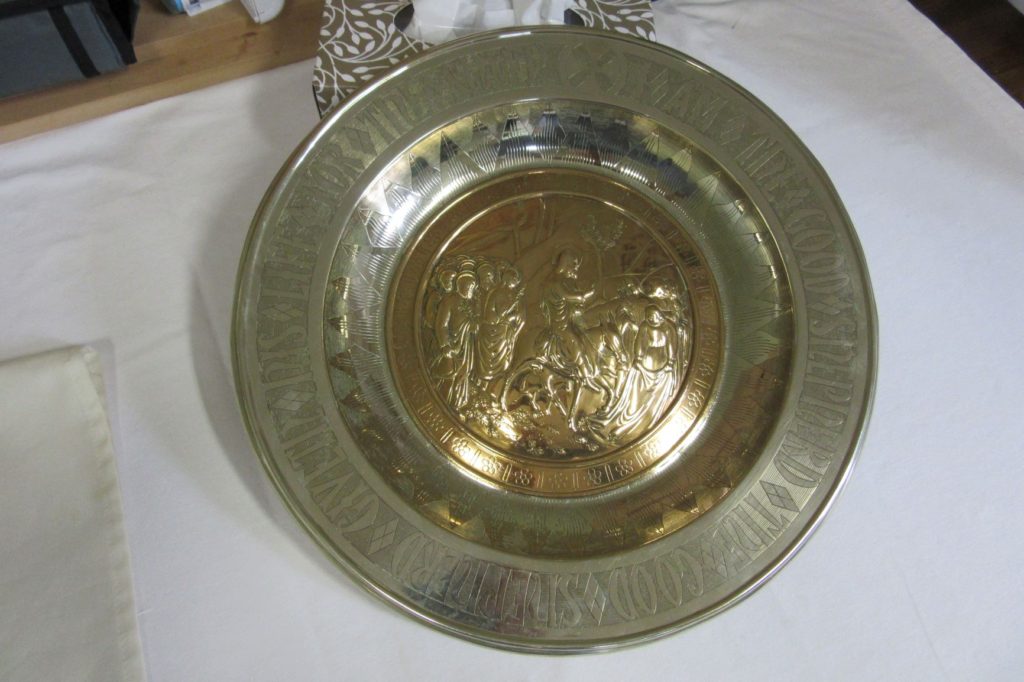
The Alms Dish in the ‘Tufnell Collection’, with the phrase evoking the Good Shepherd (Image courtesy of the Records and Archives Centre, Anglican Church Southern Queensland)

An original wax impression of Bishop Tufnell’s seal from 1859 (Image courtesy of the Records and Archives Centre, Anglican Church Southern Queensland)

The mention in The Brisbane Courier of the new Seal and the existing Arms – 7 October 1871 (Image courtesy of TROVE)
And so the image, now established, remained as the Diocesan Arms for decades to follow. In 1906 it became part of the masthead for The Church Chronicle, and subsequent Bishops and Archbishops all used the image of the Good Shepherd in a plethora of ways, from episcopal arms and rings to official Diocesan seals.

Archbishop Gerald Sharp’s Episcopal Ring – c.1923 (Image courtesy of the Records and Archives Centre, Anglican Church Southern Queensland)
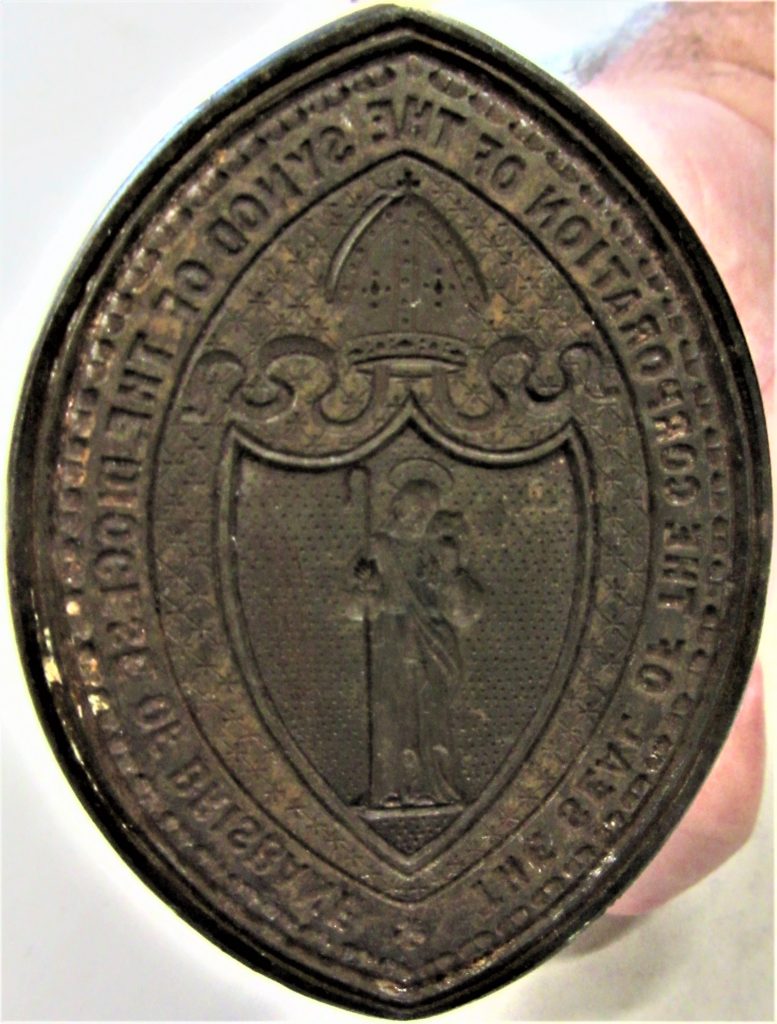
The Diocesan Seal during the time of Archbishop William Wand – c.1935 (Image courtesy of the Records and Archives Centre, Anglican Church Southern Queensland)
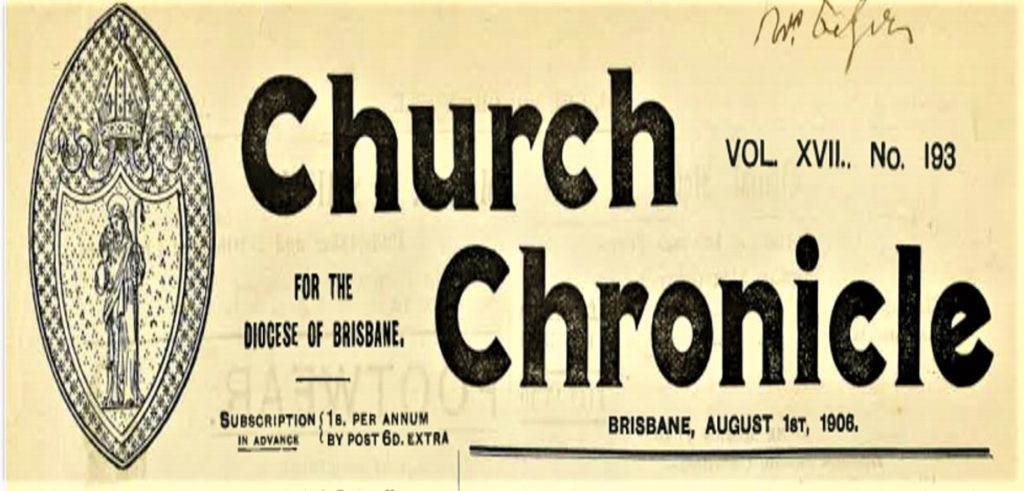
The first time the Good Shepherd Arms appeared in the masthead of the Church Chronicle – August 1906 (Image courtesy of the Records and Archives Centre, Anglican Church Southern Queensland)
Yet, over the years, there was a change. If you look below at the arms of the first Archbishop of Brisbane, The Most Rev’d St Clair Donaldson, and that of our current Archbishop, The Most Rev’d Dr Phillip Aspinall AC, you can see that Tufnell’s image of a shepherd is present in both. In the earlier example we see the Good Shepherd; however, in the current arms, we see a bareheaded shepherd. Tufnell’s Good Shepherd has lost his halo!

Archbishop St. Clair Donaldson’s Arms – 1905 (Image courtesy of the Records and Archives Centre, Anglican Church Southern Queensland)
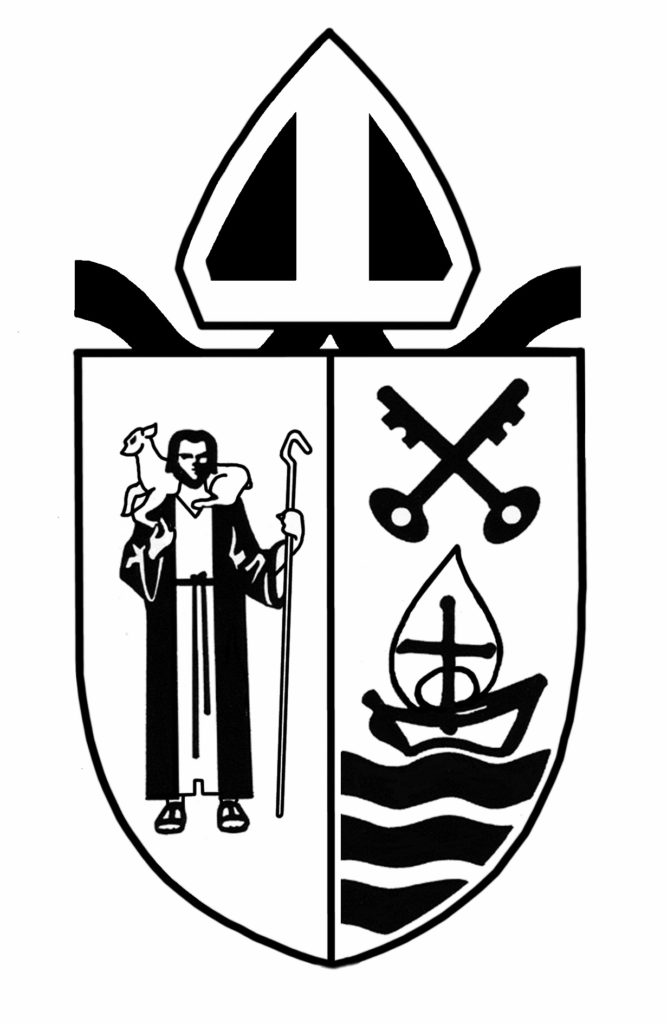
Archbishop Phillip Aspinall’s Arms – 2002 (Image courtesy of the Records and Archives Centre, Anglican Church Southern Queensland)
While this change has been noticed in various guides and books, the reason as to why the shepherd lost his halo was considered somewhat a mystery. While perusing Diocesan Council Minutes from the 1950s, however, an answer to the riddle was found. Until 1953, though widely used, the symbol of the Good Shepherd on the Diocesan Arms had never been officially recognised by the College of Arms in London. So, on 31 December 1953, the Diocesan Registrar sent a petition signed by the Archbishop to have the Arms of the Diocese recognised by the granting of letters patent. This was sent to the office of the Richmond Herald, part of the College of Arms. In January of 1954 word was sent by the Richmond Herald that there was an issue. The authorities felt that there were “…objections to granting arms with a representation of the figure of the Saviour.”

A letter from the Richmond Herald explaining the issue with using The Good Shepherd in official Arms – January 1954 (Image courtesy of the Records and Archives Centre, Anglican Church Southern Queensland)
The Diocesan Council considered the matter and they, and the Archbishop, responded in July of 1954, asking if there was some way that the Arms could remain, for the most part, the same. This was due largely to the fact that it had been used as the Arms of the Diocese since Tufnell’s time, and that Crockford’s Clerical Directory had always used it, that it appeared in stained-glass windows, Bishops’ and Archbishops’ seals, and many printed works. They conceded, however, that the College of Arms policy not to grant arms that bear the image of the Saviour was understood. Out of desperation, perhaps, the Archbishop-in-Council suggested the possible solution:
“…will it allow the same symbol to remain, but with an altered significance, such as a symbol stressing the pastoral office of the Church? The figure of a shepherd, or pastor, (instead of “The Good Shepherd”) might have a local interest, as well as its general spiritual significance, in our Diocese, which has such a large pastoral population within its boundaries.”
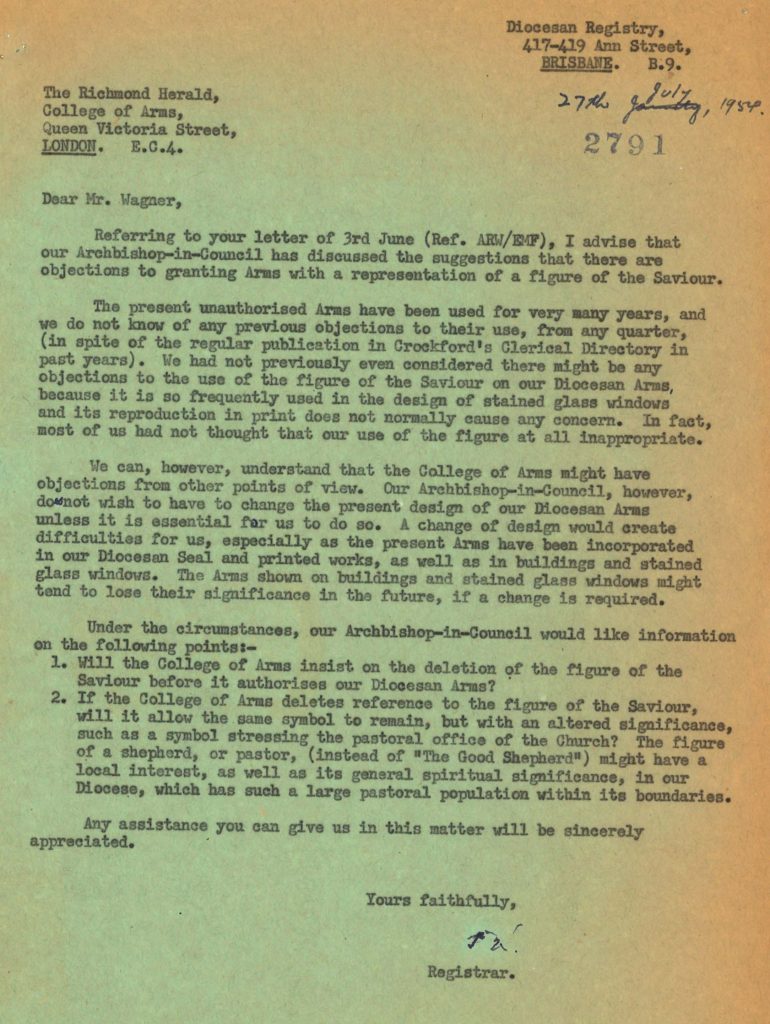
A letter from the Diocesan Register on behalf of the Archbishop in Council suggesting a compromise of using a pastoral Shepherd – July 1954 (Image courtesy of the Records and Archives Centre, Anglican Church Southern Queensland)
On 28 September of 1954 word came from the Richmond Herald that such a compromise was “…perfectly acceptable for inclusion in the Arms.” It took some time, but finally on 2 November 1956, Diocesan Registrar Roland St. John officially informed the Richmond Herald that the approved image on vellum of the Arms had been received by the Diocese. It is this figure, that of a pastoral shepherd rather than the Good Shepherd, that has been on our Diocesan Arms ever since.

The upper section of the official Diocesan Arms as registered at the College of Arms in London in 1955 (Image courtesy of the Records and Archives Centre, Anglican Church Southern Queensland)
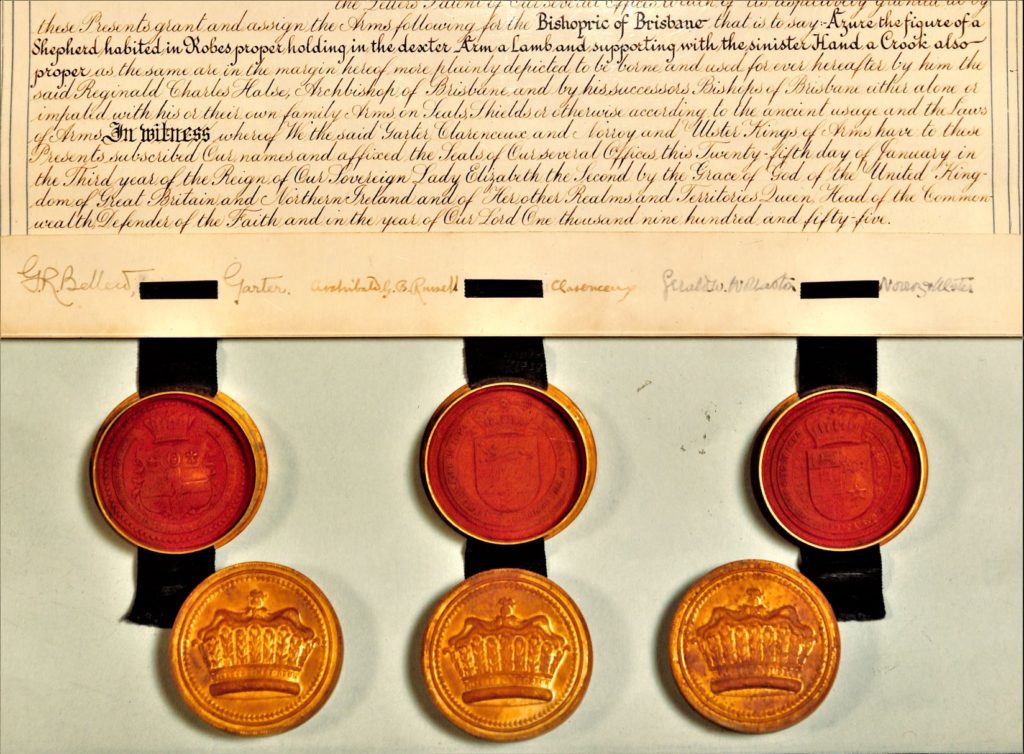
The lower section of the official Diocesan Arms (Image courtesy of the Records and Archives Centre, Anglican Church Southern Queensland)
In the removing of the halo from the Diocesan Arms, the symbolism of the image took on a different, but similarly powerful, character. Instead of the image representing the figure of Christ as ‘the Good Shepherd’, and harkening back to the first-ever Bishop of this Diocese and his personal emblem, it now represents pastoral care for our Diocese as a whole.
Perhaps, now that this story is more broadly known, our Diocesan community can look at the Diocesan Arms as having twice the significance as previously thought.






